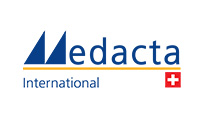“After I participated in a Learning Center in France in 2007, I immediately decided to continue with AMIS. I am really pleased to have been one of AMIS's early adopters and to have successfully contributed to its implementation and enhancements in Australia.” says Prof. John O’Donnell, St Vincent's Private Hospital, Melbourne, Australia. “The comprehensive AMIS Education program is an essential pillar and makes it possible for surgeons to take full advantage of the benefits offered by the AMIS approach. The program reduces the learning curve, provides ongoing support, and helps to prevent potential intraoperative complications, particularly during the first cases.”
AMIS represents an easily reproducible technique that delivers significant benefits to patients, surgeons, and healthcare systems, including short hospitalization3,4, reduced postoperative pain5,6, immediate muscle tone preservation7, reduced risk of dislocation8,9 and shorter rehabilitation time10,11. This minimally invasive approach has been widely embraced by the orthopaedic community, and it has been chosen by surgeons to be used in more than 500,000 patients worldwide.
“What I really love about the AMIS is the true muscle-sparing nature of the approach, and the way soft tissue structures can be preserved. This leads to a lower dislocation risk for my patients, which is crucial for both their satisfaction and implant performance,” says Dr. P. Zingg, Universitätsklinik Balgrist, Zürich, Switzerland. “Thanks to AMIS, my patients recover quickly and potentially can return home earlier. They are in less pain, and there is less tissue trauma around the hip.”
This procedure furthermore offers several economic benefits, such as a significant reduction in the cost of hip replacement compared to a standard approach12, and an improved efficiency in the operating room, as it can be potentially performed as a single-operator surgery.
All the above-mentioned clinical and economic benefits make the AMIS platform an optimal solution in outpatient hip replacement and same-day surgery setting worldwide, and particularly for U.S. Ambulatory Surgery Centers (ASCs).
“The AMIS procedure completely revolutionized my surgical care for my arthritic hip patient population. Prolonged hospital stays, weight-bearing and position restrictions, and intense narcotic usage are historical remnants of antiquated surgical care,” says T. Goldberg, MD, Austin Orthopedic Institute, Austin, Texas, United States. “Instead, I offer patients the opportunity to go home on the same day of surgery, with no restrictions and no opioid pain medications. I have changed my technique, and my patients and I have benefited from it. It’s a powerful win-win!”
AMIS is complemented by a unique and constantly evolving package of supporting products, including dedicated implants, specifically designed instruments (among which is the AMIS Mobile Leg Positioner, a patented surgical table extension which allows for a simple and reproducible procedure), and digital solutions which are part of the
MySolutions Personalized Ecosystem. AMIS is a complete experience, a comprehensive platform covering each step of the procedure with the aim of streamlining, simplifying, and facilitating the reproducibility of the anterior approach and delivering value throughout the entire patient journey.
“Not only simple surgeries, but also complex primary cases and revisions could be performed with AMIS. In the last 10 years the instrument set has become more and more efficient, and the AMIS offering has further evolved with the introduction of the Bikini platform and the no capsular release technique,” concludes Dr. F. Laude, CMC Paris V, Paris, France.
“AMIS represents a cornerstone in the history of Medacta, and embodies our vision, focused on finding solutions that can improve patient well-being and the sustainability of healthcare systems,” says Francesco Siccardi, CEO of Medacta. “We are very proud to celebrate the milestone of 500,000 AMIS cases worldwide, and we’ll continue to set a high bar in improving our educational programs and finding new minimally invasive and personalized solutions to improve the care experience and the patient satisfaction.”
Discover more about
AMIS.
1 Müller DA, Zingg PO, Dora C. Anterior minimally invasive approach for total hip replacement: five-year survivorship and learning curve. Hip Int 2014.
2 Zing P. AMIS using Versafitcup and Quadra to overcome tissue response: 5-year results. Podium presentation at the 7th M.O.R.E. International Symposium, Lugano, Switzerland, April 11-12, 2014.
3 Dora C. Minimalinvasive Zugänge an der Hüfte. Orthopäedie Mitteilungen 6/07, 574-576.
4 Laude F. Total hip arthroplasty through an anterior Hueter minimally invasive approach. Interact Surg (2006) 1: 5-11.
5 O’Donnell J. A randomized controlled trial of anterior vs Hardinge approach for THR. Podium presentation at the Annual Scientific Meeting of the Arthroplasty Society of Australia, Gold Coast, Australia, June 1 – 4, 2011.
6 Clayson P. AMIS vs Röttinger approach. Podium presentation at the 6th M.O.R.E. International Symposium on total hip and knee replacement, Stresa, Italy, May 13-14, 2011.
7 Jayankura M, Roty M, Potaznik A, Rooze M, Cermak K, Remy P, Gillard B, Biltiau N, Schuind F. Isokinetic and isometric muscle strength recovery after total hip arthroplasty implanted by direct anterior approach. Podium presentation at the 10th Annual Congress of the EFORT, Vienna, Austria, June 3-6, 2009.
8 Vasina PG, Rossi R, Giudice GM, Palumbi P. Hip arthroposthesis through the anterior minimally invasive approach. Sphera 2010;6(12) - Speciale Ortopedia.
9 Sebecic B, Staresinic M, Culjak V, Japjec M. Minimally invasive hip arthroplasty: advantages and disadvantages.Med Glas Ljek komore Zenicko- doboj kantona 2012; 9(1):160-165.
10 Dallinger R. Post-operative isokinetic strength measurements for various hip approaches. Podium presentation at the 1st World Conference on Anterior Hip Approach, Zurich, Switzerland, September 10-12, 2009.
11 Nabavi A, Philibert S, Morizzi R. A prospective study comparing short term results of anterior minimally invasive hip replacement surgery with the standard posterior approach. Poster at the 86th Annual Meeting of the JOA, Hiroshima, Japan, May 23-26, 2013.
12 Christofilopoulos P, Roussos C, Lädermann A, Lübbeke A, Hoffmeyer P. Socioeconomic aspects of total hip arthroplasty. A comparison between anterior minimally invasive surgery and standard lateral approach. Poster at the 12th EFORT Congress, Copenhagen, Denmark: 1-4 June 2011.

